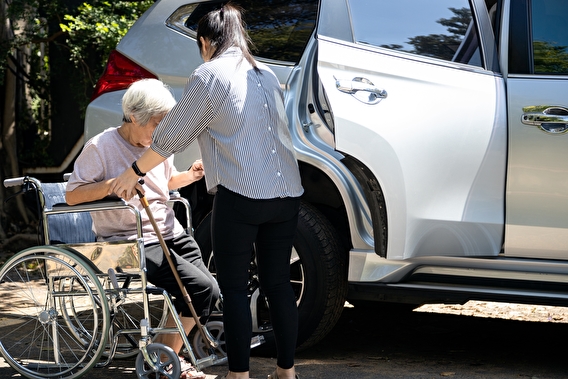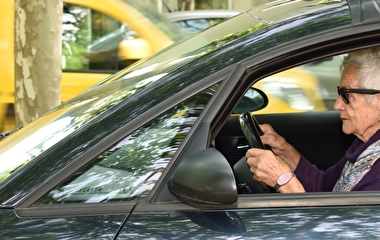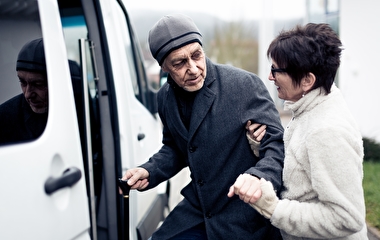
An aging population, increasing diversity, less access to health care services, and rural highway dangers will require Minnesota’s rural transportation landscape to evolve and shift. At CTS’s annual all-councils meeting, presenters discussed the changing demographics of Minnesota, providing health care and service access in rural settings, and using community engagement strategies to develop rural infrastructure safety improvements.
Minnesota State Demographic Center senior demographer Eric Guthrie kicked off the event with insights into Minnesota’s evolving population. Guthrie shared 2020 census results, an overview of how the population is changing and what Minnesota can expect, the importance of diversity, and the impact of an aging population.
“As the baby boomer population ages, there will be a labor force deficit,” he said. “Natural increase cannot solve this problem; it is directly related to the structure of our population.”
The challenges presented by aging will be even more pronounced in rural areas, Guthrie added, because the median age in Minnesota’s rural counties is much older than in the state overall. These changes will impact rural transportation, including the need for additional resources to support aging in place, such as transportation to medical care
Guthrie emphasized how important diversity in Minnesota is for offsetting the decline in natural population and the increase in domestic, out-of-state migration. For rural areas, the Hispanic population will be especially important because this group tends to disperse throughout the state more than other migrant groups.
“That is really the avenue for Minnesota’s population growth,” Guthrie said. “International migration is going to be vital to focus on [as] the way for the state to grow its population.”
Next, rural transportation expert Valerie Lefler, founder and executive director of Feonix - Mobility Rising, outlined the three main challenges for rural health care access. According to Lefler, the problem begins with a broken policy structure resulting in siloed funding, contractual funding gaps for Medicare and Medicaid transportation, and barriers related to matching funds and service requirements. The second challenge is the underfunding of health care and transportation providers in rural communities. The final challenge is limited rural transportation options.
“There is talk about building more rural community hospitals, but our critical-access hospitals will tell you that is not going to be your answer,” Lefler said. “You can buy a really nice bus with a really well-trained driver for the cost of putting a hospital in a community.”
Despite these challenges, Lefler points to signs of progress. Current opportunities include incentives for better patient outcomes, enhanced coordination of transportation funding with “mobility wallet” technology for users (similar to EBT cards for food benefits), and an increased role for philanthropy and corporate sponsorship matching funds.
The final presenter was Nichole Morris, U of M Human Factors Safety Laboratory director, who described research focused on increasing the acceptance of engineering safety solutions in rural communities. “We have a hugely disproportionate number of fatal crashes happening in rural areas, and we need to prevent these crashes because of their lower survivability,” Morris said.
One way to prevent crashes is to restrict the most dangerous maneuvers—such as crossing divided highways at through-stop intersections—with engineering solutions like the rural ‘U-turn’ intersection (now called a J-turn intersection). However, these solutions may be initially confusing and can encounter community resistance for a variety of reasons. In her research, Morris worked to discover the best methods to overcome that resistance and increase community buy-in.
“It’s important because these really do save lives,” Morris said. “We need to get them deployed, but we can’t be ramming them down community members’ throats and hoping they will accept them because the pushback will continue.”
Morris found one of the best ways to reach rural audiences is powerful storytelling with video or in-person testimonials from people the audience trusts. Other tips include using mixed-method communication strategies (including testimonials, informational videos, and simulation videos) to reach a wider audience, finding ways to get people personally involved such as invoking a memory of a crash or near-miss for themselves or a loved one, and leading with information about the engineering solution’s benefits.
The event—Demographics, Health Care Access, and Community Engagement—was held at the University of Minnesota’s McNamara Alumni Center on May 13, 2024. The topics presented tied into CTS’s Rural Needs, Statewide Answers: Improving Transportation for All Communities thematic focus for 2024. To support solution-finding and collaboration, attendees were also invited to engage with the presenters and each other through conversation circle discussions.
—Megan Tsai, contributing writer


